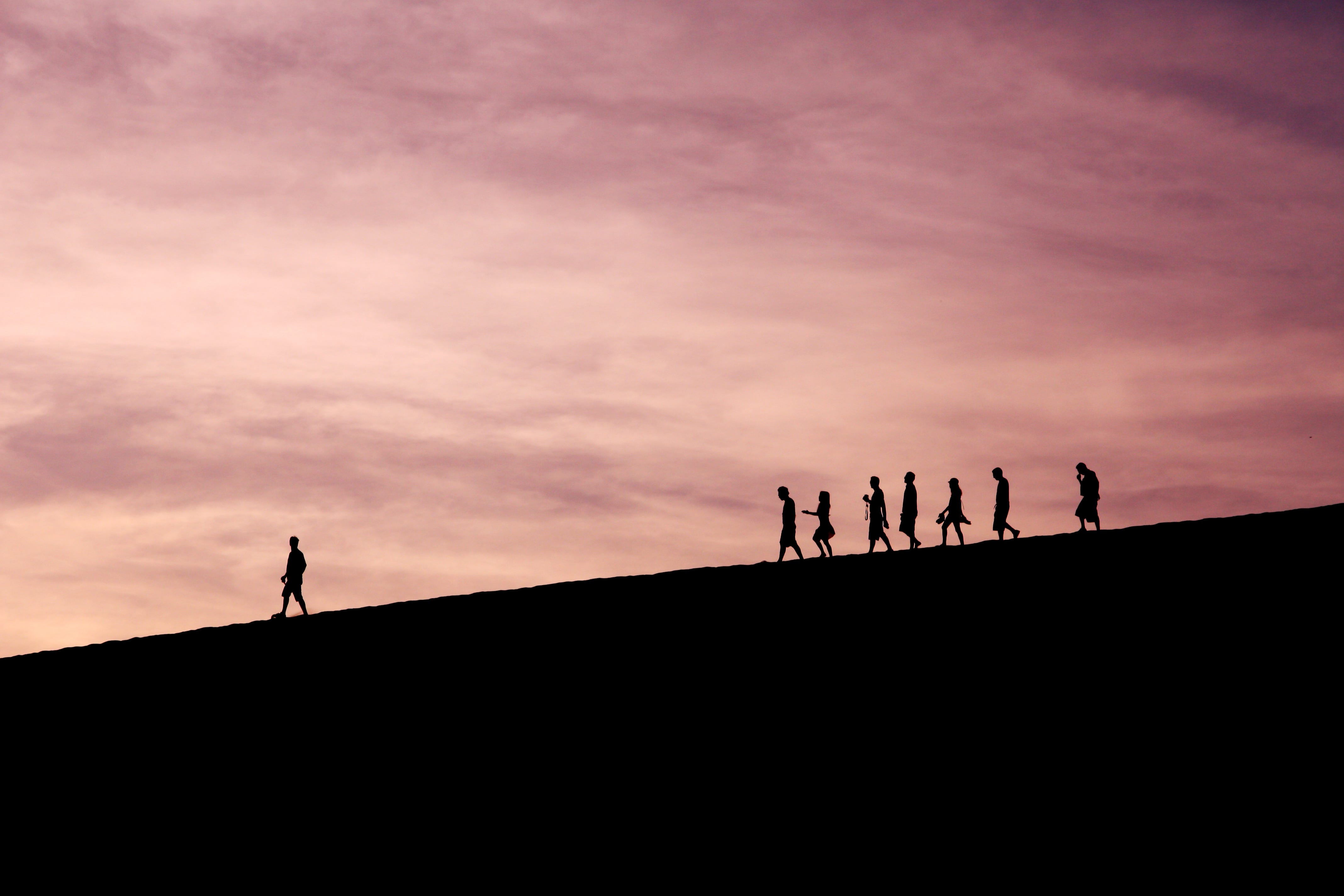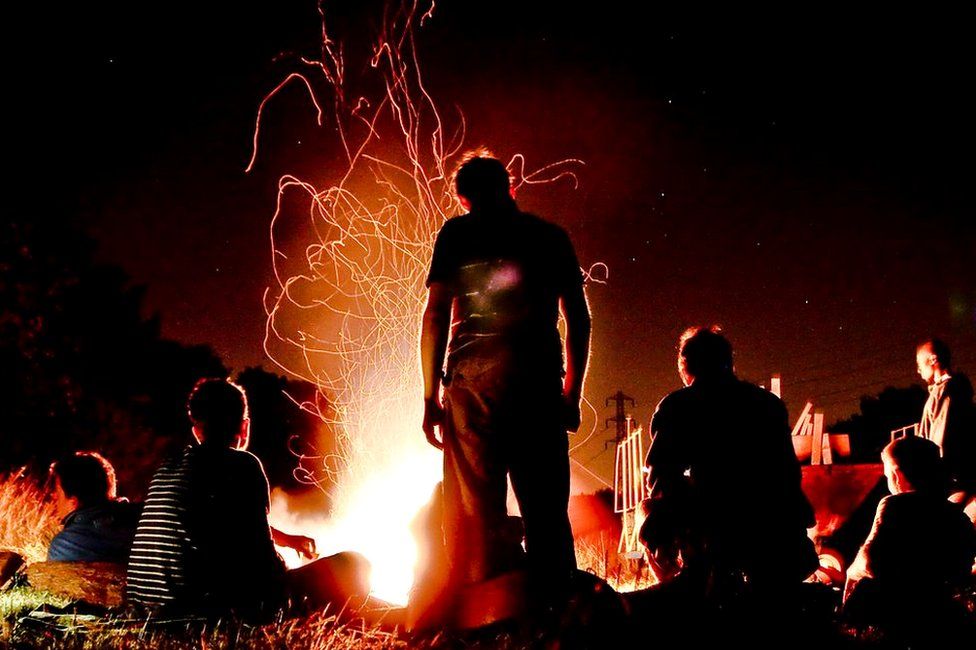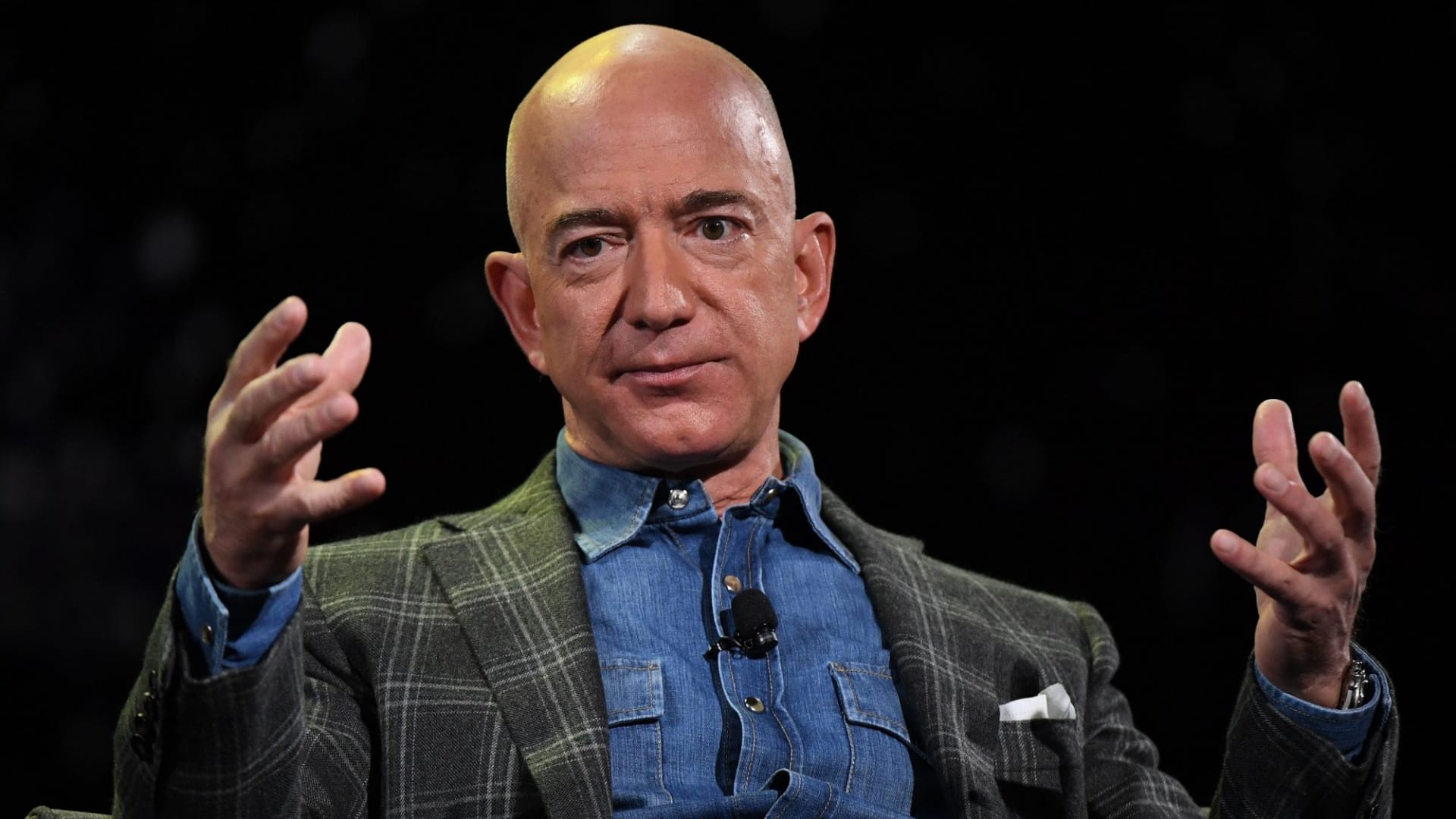   
CEO Picks - The most popular editorials that have stood the test of time!
How Long Can We Live?
 New research is intensifying the debate - with profound implications for the future of the planet. New research is intensifying the debate - with profound implications for the future of the planet.
In 1990, not long after Jean-Marie Robine and Michel Allard began conducting a nationwide study of French centenarians, one of their software programs spat out an error message. An individual in the study was marked as 115 years old, a number outside the program's range of acceptable age values. They called their collaborators in Arles, where the subject lived, and asked them to double-check the information they had provided, recalls Allard, who was then the director of the IPSEN Foundation, a nonprofit research organization. Perhaps they made a mistake when transcribing her birth date? Maybe this Jeanne Calment was actually born in 1885, not 1875? No, the collaborators said. We've seen her birth certificate. The data is correct.
Calment was already well known in her hometown. Over the next few years, as rumors of her longevity spread, she became a celebrity.
Continued here
|
Lost touch: how a year without hugs affects our mental health
 Humans are designed to touch and be touched - which is why so many who live on their own have suffered during the pandemic. Will we ever fully recover? Humans are designed to touch and be touched - which is why so many who live on their own have suffered during the pandemic. Will we ever fully recover?
There's only so much a dog can do, even if that is a lot. I live alone with my staffy, and by week eight of the first lockdown she was rolling her eyes at my ever-tightening clutch. I had been sofa-bound with Covid and its after-effects before lockdown was announced, then spring and summer passed without any meaningful touch from another person. I missed the smell of my friends' clothes and my nephew's hair, but, more than anything, I missed the groundedness only another human body can bring. The ache in my solar plexus that married these thoughts often caught me off guard.
The need for touch exists below the horizon of consciousness. Before birth, when the amniotic fluid in the womb swirls around us and the foetal nervous system can distinguish our own body from our mother's, our entire concept of self is rooted in touch.
Continued here
|
� | � |  | 5 Uncommon Things Great Leaders Do
 #1 They don't have an open-door policy. #1 They don't have an open-door policy.
There are some important traits that most good leaders share. Things like delegation, communication, influence, leading by example, openness to feedback, humility, etc., are commonly spoken about and seen in them (well, humility not quite often). However, there are some other qualities that great leaders possess and things that they do that are extremely important but not often spoken about. This article is an attempt to shine a light on those.
Continued here
|
On the Link Between Great Thinking and Obsessive Walking
 From Charles Darwin to Toni Morrison, Jeremy DeSilva Looks at Our Need to Move From Charles Darwin to Toni Morrison, Jeremy DeSilva Looks at Our Need to Move
Charles Darwin was an introvert. Granted, he spent almost five years traveling the world on the Beagle recording observations that produced some of the most important scientific insights ever made. But he was in his twenties then, embarking on a privileged, 19th-century naturalist's version of backpacking around Europe during a gap year. After returning home in 1836, he never again stepped foot outside the British Isles.
He avoided conferences, parties, and large gatherings. They made him anxious and exacerbated an illness that plagued much of his adult life. Instead, he passed his days at Down House, his quiet home almost twenty miles southeast of London, doing most of his writing in the study. He occasionally entertained a visitor or two but preferred to correspond with the world by letter. He installed a mirror in his study so he could glance up from his work to see the mailman coming up the road - the 19th-century version of hitting the refresh button on email.
Darwin's best thinking, however, was not done in his study. It was done outside, on a lowercase d-shaped path on the edge of his property. Darwin called it the Sandwalk. Today, it is known as Darwin's thinking path.
Continued here
|
The new fuel to come from Saudi Arabia
 Green hydrogen is taking off around the globe - its supporters say it could play an important role in decarbonisation, but sceptics question its safety and practicality. Green hydrogen is taking off around the globe - its supporters say it could play an important role in decarbonisation, but sceptics question its safety and practicality.
On the edge of the Saudi Arabian desert beside the Red Sea, a futuristic city called Neom is due to be built. The $500bn (£380bn) city - complete with flying taxis and robotic domestic help - is planned to become home to a million people. And what energy product will be used both to power this city and sell to the world? Not oil. Instead, Saudi Arabia is banking on a different fuel - green hydrogen. This carbon-free fuel made is from water by using renewably produced electricity to split hydrogen molecules from oxygen molecules.
This summer, a large US gas company, Air Products & Chemicals, announced that as part of Neom it has been building a green hydrogen plant in Saudi Arabia for the past four years. The plant is powered by four gigawatts of electricity from wind and solar projects that sprawl across the desert. It claims to be the world's largest green hydrogen project - and more Saudi plants are on the drawing board.
Continued here
|
The real reason humans are the dominant species
 Energy is the key to humanity's world domination. Energy is the key to humanity's world domination.
Not just the jet fuel that allows us to traverse entire continents in a few hours, or the bombs we build that can blow up entire cities, but the vast amounts of energy we all use every day.
Consider this: a resting human being requires about the same amount of energy as an old-fashioned incandescent light bulb to sustain their metabolism - about 90 watts (joules per second).
But the average human being in a developed country uses more like 100 times that amount, if you add in the energy needed to get around, build and heat our homes, grow our food and all the other things our species gets up to.
The average American, for example, consumes about 10,000 watts.
Continued here
|
| � |  | All Companies Should Live by the Jeff Bezos 70 Percent Rule
 A guide to making business decisions--even without all the information--inspired by the Amazon founder. A guide to making business decisions--even without all the information--inspired by the Amazon founder.
There are times when companies move too swiftly into a decision that hurts them. There are also occasions when they're too slow and they fail. Jeff Bezos lives by a rule that addresses that problem.
In a 2016 annual shareholder letter, Bezos talked about his approach to decision making. He suggested that while it's always nice to have access to all of the information someone wants, in the vast majority of cases, waiting until you know everything you should know is a problem.
"Most decisions should probably be made with somewhere around 70 percent of the information you wish you had," Bezos wrote in the letter. "If you wait for 90 percent, in most cases, you're probably being slow."
That's a framework that every business owner should adopt.
Continued here
|
What the West Gets Wrong About China
 Many people have wrongly assumed that political freedom would follow new economic freedoms in China and that its economic growth would have to be built on the same foundations as in the West. The authors suggest that those assumptions are rooted in three essentially false beliefs about modern China: (1) Economics and democracy are two sides of the same coin; (2) authoritarian political systems can't be legitimate; and (3) the Chinese live, work, and invest like Westerners. But at every point since 1949 the Chinese Communist Party - central to the institutions, society, and daily experiences that shape all Chinese people - has stressed the importance of Chinese history and of Marxist-Leninist doctrine. Until Western companies and politicians understand this and revise their views, they will continue to get China wrong. Many people have wrongly assumed that political freedom would follow new economic freedoms in China and that its economic growth would have to be built on the same foundations as in the West. The authors suggest that those assumptions are rooted in three essentially false beliefs about modern China: (1) Economics and democracy are two sides of the same coin; (2) authoritarian political systems can't be legitimate; and (3) the Chinese live, work, and invest like Westerners. But at every point since 1949 the Chinese Communist Party - central to the institutions, society, and daily experiences that shape all Chinese people - has stressed the importance of Chinese history and of Marxist-Leninist doctrine. Until Western companies and politicians understand this and revise their views, they will continue to get China wrong.
Continued here
|
What Octopus Dreams Tell Us About the Evolution of Sleep
 Understanding how other animals dream could help us figure out why it's so important to the human brain, and why it may have been preserved throughout history. Understanding how other animals dream could help us figure out why it's so important to the human brain, and why it may have been preserved throughout history.
Fruitflies, octopuses, birds, and humans don't seem to have much in common. Some live on land, others are aquatic. Some fly, while others are earthbound. Some are vertebrates, others lack backbones. These creatures evolved separately and their common ancestors are far, far back in the evolutionary chain. But they may share one fundamental feature: They dream.
Nearly all creatures sleep, though there's some debate as to whether single-celled organisms like paramecium do. But no one really knows why. For years, researchers have bandied about theories that sleep helps with memory, growth, and learning - and it's clear that humans need sleep to function properly - but there's little else that's well understood. "Sleep is this big black box," says Marcos Frank, a neuroscientist at Washington State University. Frank likens sleep to a mysterious organ: It's clear that it exists and is vital to animals' health, but it's exact function and the mechanisms that control it are still unknown.
Continued here
|
How Fit Can You Get From Just Walking?
 Walking is good for you, obviously. But can it whip you into shape? Walking is good for you, obviously. But can it whip you into shape?
In our group chat, a few friends made a commitment to walking 10,000 steps a day and tracking our food. We aimed for about 2,000 calories. After four months following those guidelines, my friend John Sharkman dropped 43 pounds. Collectively the group chat was down 105. Those are life-changing, infomercial-pitch numbers. Some caveats obviously apply: losing weight is hard, and keeping it off is even harder. Your mileage will almost certainly vary. But the whole experience made me wonder: just how fit can you get from just walking?
"I think walking is probably the single most underutilized tool in health and wellness," says nutrition coach and personal trainer Jeremy Fernandes. According to Fernandes, the reason we rarely hear about walking as a major fitness tool - in the same conversations as stuff like yoga or expensive spinning bikes - is that people aren't emotionally prepared for fitness to be easy.
Continued here
|
| � |  | Spirituality is a brain state we can all reach, religious or not
 William James, the father of Western psychology, in 1902 defined spiritual experiences as states of higher consciousness, which are induced by efforts to understand the general principles or structure of the world through one's inner experience. At the core of his view of spirituality is what we might call 'connectedness', which refers to the fact that individual goals can be truly realised only in the context of the whole - one's relationship to the world and to others. William James, the father of Western psychology, in 1902 defined spiritual experiences as states of higher consciousness, which are induced by efforts to understand the general principles or structure of the world through one's inner experience. At the core of his view of spirituality is what we might call 'connectedness', which refers to the fact that individual goals can be truly realised only in the context of the whole - one's relationship to the world and to others.
Traditionally, this spiritual state has been described as divine, achievable through contemplative and embodied practices, such as prayer, meditation and rhythmic rituals. Indeed, this higher state of consciousness and connection has been reported in many spiritual traditions, ranging from Buddhism to Sufism and Judaism to Christianity. However, recent neuroscientific research shows that the same state can be achieved by secular practices too.
Continued here
|
Emotional Agility
 The prevailing wisdom says that negative thoughts and feelings have no place at the office. But that goes against basic biology. All healthy human beings have an inner stream of thoughts and feelings that include criticism, doubt, and fear. David and Congleton have worked with leaders in various industries to build a critical skill they call emotional agility, which enables people to approach their inner experiences in a mindful, values-driven, and productive way rather than buying into or trying to suppress them. The authors offer four practices (adapted from Acceptance and Commitment Therapy, or ACT) designed to help readers do the same: The prevailing wisdom says that negative thoughts and feelings have no place at the office. But that goes against basic biology. All healthy human beings have an inner stream of thoughts and feelings that include criticism, doubt, and fear. David and Congleton have worked with leaders in various industries to build a critical skill they call emotional agility, which enables people to approach their inner experiences in a mindful, values-driven, and productive way rather than buying into or trying to suppress them. The authors offer four practices (adapted from Acceptance and Commitment Therapy, or ACT) designed to help readers do the same:
Continued here
|
| � |  | The future of social media is sharing less, not more
 We may never leave social media completely. But we will control which aspects of our identities we share, and with whom We may never leave social media completely. But we will control which aspects of our identities we share, and with whom
The emergence of Facebook has been significant in how we conceive of social media. Almost every platform we use encourages us to share as much of our personal lives as possible, incentivising us with more features, filters and monetisation tools. Instead of the conscious curation that characterised social networks of the past, these platforms continue promising users that if they simply post more about themselves and their friends, they can have more fulfilling social experiences.
In recent years, however, public conversations around the darker elements of social media platforms - from data collection and privacy issues to fake news and propaganda - have led to more thinking on how we should use them (or if they should even be used at all). In the next decade, as we reassess our relationship with social media - and by extension, the Big Tech companies that run them - we will see more people leave public platforms entirely, sticking instead to small communities and friendship groups on more private platforms like WhatsApp, Telegram or Signal.
But this will be a luxury only few will be able to choose.
Continued here
|
The Secret of Adaptable Organizations Is Trust
 The pandemic has shone a sharp spotlight on the need for companies to be adaptable, but even before the mayhem of 2020, business leaders had to deal with multiple crises. The problem is, despite the energy that leaders put into their work, most attempts to make companies adaptable come to nothing. The author presents a "less is more" approach to adaptability, where management loosens their hold and gives the organization the freedom it needs to work effectively. The idea is that management should stick to defining what they want to achieve and let the organization focus on how to achieve it. Four design principles, inspired by the scientific concept of "emergence," can help leaders write adaptability into their organization's DNA. The pandemic has shone a sharp spotlight on the need for companies to be adaptable, but even before the mayhem of 2020, business leaders had to deal with multiple crises. The problem is, despite the energy that leaders put into their work, most attempts to make companies adaptable come to nothing. The author presents a "less is more" approach to adaptability, where management loosens their hold and gives the organization the freedom it needs to work effectively. The idea is that management should stick to defining what they want to achieve and let the organization focus on how to achieve it. Four design principles, inspired by the scientific concept of "emergence," can help leaders write adaptability into their organization's DNA.
Continued here
|
| � |  | How This Chinese Vaping Billionaire Became One Of The World's Richest Women In Three Years
 Kate Wang, 39, jumped into the ranks of the world's richest when her vaping company RLX went public on the New York Stock Exchange in January. Now the Procter & Gamble and Uber veteran faces looming threats from Chinese regulators and skeptical investors. Kate Wang, 39, jumped into the ranks of the world's richest when her vaping company RLX went public on the New York Stock Exchange in January. Now the Procter & Gamble and Uber veteran faces looming threats from Chinese regulators and skeptical investors.
In a period of 55 hours starting on the morning of March 22, shares in Chinese vaping company RLX Technology collapsed 54%, slashing more than $16 billion from the startup's market cap. The slump continued through the week as investors sold on the news of a potential industry crackdown by China's tobacco regulator and the Securities and Exchange Commission's announcement that it would start enforcing a law to require Chinese listed companies to provide audits or risk being delisted.
It was just another twist in the rollercoaster history of a company that rose from nothing to become the largest e-cigarette brand in China in three years. Just two months prior, it raised $1.4 billion in a blockbuster IPO on the New York Stock Exchange that catapulted four of its cofounders into the ranks of the world's wealthiest.
Among them was CEO Kate Wang, 39. One of a record 57 self-made women billionaires from China, Wang was worth $9.1 billion on the day of the IPO, thanks to her 20% stake in RLX.
Continued here
|
Is Your C-Suite Equipped to Lead a Digital Transformation?
 The Covid-19 pandemic dramatically accelerated technology adoption across all industries. According to one survey, 77% of CEOs reported that the pandemic sped up their companies' digital transformation plans, and as Microsoft CEO Satya Nadella noted in the early days of the crisis, "We've seen two years' worth of digital transformation in two months." A study conducted by Twilio found that Covid-19 accelerated companies' digital communications strategies by an average of six years. The Covid-19 pandemic dramatically accelerated technology adoption across all industries. According to one survey, 77% of CEOs reported that the pandemic sped up their companies' digital transformation plans, and as Microsoft CEO Satya Nadella noted in the early days of the crisis, "We've seen two years' worth of digital transformation in two months." A study conducted by Twilio found that Covid-19 accelerated companies' digital communications strategies by an average of six years.
Historically, success rates for digital transformation efforts are dismally low. Many organizations rush to boost headcount and budget, hiring teams of talented engineers, data scientists, and cybersecurity experts.
Continued here
|
| � |  | Eliminate Strategic Overload
 How to select fewer initiatives with greater impact How to select fewer initiatives with greater impact
As companies respond to intensifying competitive pressures and challenges, they ask more and more of their employees. But organizations often have very little to show for the efforts of their talented and engaged workers.
By selecting fewer initiatives with greater impact, companies can make their strategies more powerful. A strategic initiative is worthwhile only if it does one or more of the following:
- It creates value for customers by raising their willingness to pay. As your company finds ways to innovate or to improve existing products, the maximum price people will be willing to pay for the offering rises.
- It creates value for employees by making work more attractive. Offering better jobs lowers the minimum compensation that you have to offer to attract talent to your business.
- It creates value for suppliers by reducing their operating cost. As suppliers' costs go down, the lowest price they would be willing to accept for their goods falls.
As companies expand the total amount of value created for their customers, employees, and suppliers, they position themselves for enduring financial success.
Continued here
|
| � |  |
 | TradeBriefs Publications are read by over 10,00,000 Industry Executives |

 New research is intensifying the debate - with profound implications for the future of the planet.
New research is intensifying the debate - with profound implications for the future of the planet. Humans are designed to touch and be touched - which is why so many who live on their own have suffered during the pandemic. Will we ever fully recover?
Humans are designed to touch and be touched - which is why so many who live on their own have suffered during the pandemic. Will we ever fully recover? From Charles Darwin to Toni Morrison, Jeremy DeSilva Looks at Our Need to Move
From Charles Darwin to Toni Morrison, Jeremy DeSilva Looks at Our Need to Move Green hydrogen is taking off around the globe - its supporters say it could play an important role in decarbonisation, but sceptics question its safety and practicality.
Green hydrogen is taking off around the globe - its supporters say it could play an important role in decarbonisation, but sceptics question its safety and practicality. Energy is the key to humanity's world domination.
Energy is the key to humanity's world domination.  A guide to making business decisions--even without all the information--inspired by the Amazon founder.
A guide to making business decisions--even without all the information--inspired by the Amazon founder. Many people have wrongly assumed that political freedom would follow new economic freedoms in China and that its economic growth would have to be built on the same foundations as in the West. The authors suggest that those assumptions are rooted in three essentially false beliefs about modern China: (1) Economics and democracy are two sides of the same coin; (2) authoritarian political systems can't be legitimate; and (3) the Chinese live, work, and invest like Westerners. But at every point since 1949 the Chinese Communist Party - central to the institutions, society, and daily experiences that shape all Chinese people - has stressed the importance of Chinese history and of Marxist-Leninist doctrine. Until Western companies and politicians understand this and revise their views, they will continue to get China wrong.
Many people have wrongly assumed that political freedom would follow new economic freedoms in China and that its economic growth would have to be built on the same foundations as in the West. The authors suggest that those assumptions are rooted in three essentially false beliefs about modern China: (1) Economics and democracy are two sides of the same coin; (2) authoritarian political systems can't be legitimate; and (3) the Chinese live, work, and invest like Westerners. But at every point since 1949 the Chinese Communist Party - central to the institutions, society, and daily experiences that shape all Chinese people - has stressed the importance of Chinese history and of Marxist-Leninist doctrine. Until Western companies and politicians understand this and revise their views, they will continue to get China wrong. Understanding how other animals dream could help us figure out why it's so important to the human brain, and why it may have been preserved throughout history.
Understanding how other animals dream could help us figure out why it's so important to the human brain, and why it may have been preserved throughout history.  Walking is good for you, obviously. But can it whip you into shape?
Walking is good for you, obviously. But can it whip you into shape? William James, the father of Western psychology, in 1902 defined spiritual experiences as states of higher consciousness, which are induced by efforts to understand the general principles or structure of the world through one's inner experience. At the core of his view of spirituality is what we might call 'connectedness', which refers to the fact that individual goals can be truly realised only in the context of the whole - one's relationship to the world and to others.
William James, the father of Western psychology, in 1902 defined spiritual experiences as states of higher consciousness, which are induced by efforts to understand the general principles or structure of the world through one's inner experience. At the core of his view of spirituality is what we might call 'connectedness', which refers to the fact that individual goals can be truly realised only in the context of the whole - one's relationship to the world and to others.  The prevailing wisdom says that negative thoughts and feelings have no place at the office. But that goes against basic biology. All healthy human beings have an inner stream of thoughts and feelings that include criticism, doubt, and fear. David and Congleton have worked with leaders in various industries to build a critical skill they call emotional agility, which enables people to approach their inner experiences in a mindful, values-driven, and productive way rather than buying into or trying to suppress them. The authors offer four practices (adapted from Acceptance and Commitment Therapy, or ACT) designed to help readers do the same:
The prevailing wisdom says that negative thoughts and feelings have no place at the office. But that goes against basic biology. All healthy human beings have an inner stream of thoughts and feelings that include criticism, doubt, and fear. David and Congleton have worked with leaders in various industries to build a critical skill they call emotional agility, which enables people to approach their inner experiences in a mindful, values-driven, and productive way rather than buying into or trying to suppress them. The authors offer four practices (adapted from Acceptance and Commitment Therapy, or ACT) designed to help readers do the same:  We may never leave social media completely. But we will control which aspects of our identities we share, and with whom
We may never leave social media completely. But we will control which aspects of our identities we share, and with whom The pandemic has shone a sharp spotlight on the need for companies to be adaptable, but even before the mayhem of 2020, business leaders had to deal with multiple crises. The problem is, despite the energy that leaders put into their work, most attempts to make companies adaptable come to nothing. The author presents a "less is more" approach to adaptability, where management loosens their hold and gives the organization the freedom it needs to work effectively. The idea is that management should stick to defining what they want to achieve and let the organization focus on how to achieve it. Four design principles, inspired by the scientific concept of "emergence," can help leaders write adaptability into their organization's DNA.
The pandemic has shone a sharp spotlight on the need for companies to be adaptable, but even before the mayhem of 2020, business leaders had to deal with multiple crises. The problem is, despite the energy that leaders put into their work, most attempts to make companies adaptable come to nothing. The author presents a "less is more" approach to adaptability, where management loosens their hold and gives the organization the freedom it needs to work effectively. The idea is that management should stick to defining what they want to achieve and let the organization focus on how to achieve it. Four design principles, inspired by the scientific concept of "emergence," can help leaders write adaptability into their organization's DNA. Kate Wang, 39, jumped into the ranks of the world's richest when her vaping company RLX went public on the New York Stock Exchange in January. Now the Procter & Gamble and Uber veteran faces looming threats from Chinese regulators and skeptical investors.
Kate Wang, 39, jumped into the ranks of the world's richest when her vaping company RLX went public on the New York Stock Exchange in January. Now the Procter & Gamble and Uber veteran faces looming threats from Chinese regulators and skeptical investors. The Covid-19 pandemic dramatically accelerated technology adoption across all industries. According to one survey, 77% of CEOs reported that the pandemic sped up their companies' digital transformation plans, and as Microsoft CEO Satya Nadella noted in the early days of the crisis, "We've seen two years' worth of digital transformation in two months." A study conducted by Twilio found that Covid-19 accelerated companies' digital communications strategies by an average of six years.
The Covid-19 pandemic dramatically accelerated technology adoption across all industries. According to one survey, 77% of CEOs reported that the pandemic sped up their companies' digital transformation plans, and as Microsoft CEO Satya Nadella noted in the early days of the crisis, "We've seen two years' worth of digital transformation in two months." A study conducted by Twilio found that Covid-19 accelerated companies' digital communications strategies by an average of six years.  How to select fewer initiatives with greater impact
How to select fewer initiatives with greater impact
No comments:
Post a Comment